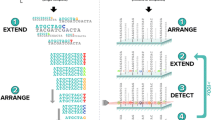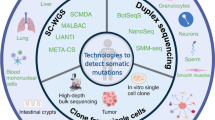Abstract
Neurofibromatosis type 1 (NF1) is a frequent hereditary disorder. The disease is characterized by a very high mutation rate (up to 1/10000 gametes per generation). NF1-related loci in the human genome have been implicated in the high mutation rate by hypothesizing that these carry disease-causing mutations, which can be transferred to the functional NF1 gene on chromosome arm 17q by interchromosomal gene conversion. To test this hypothesis, we want to identify and characterize the NF1-related loci in the human genome. In this study, we have localized an NF1-related locus in the most centromeric region of the long arm of chromosome 22. We demonstrate that this locus contains sequences homologous to cDNAs that include the GAP-related domain of the functional NF1 gene. However, the GAP-related domain itself is not represented in this locus. In addition, cosmids specific to this locus reveal, by in situ hybridization, NF1-related loci in the pericentromeric region of chromosome arm 14q and in chromosomal band 2q21. These cosmids will enable us to determine whether identified disease-causing mutations are present at the chromosome 22-associated NF1-related locus.
Similar content being viewed by others
Author information
Authors and Affiliations
Additional information
Received: 18 December 1995 / Revised: 5 February 1996
Rights and permissions
About this article
Cite this article
Hulsebos, T., Bijleveld, E., Riegman, P. et al. Identification and characterization of NF1-related loci on human chromosomes 22, 14 and 2. Hum Genet 98, 7–11 (1996). https://doi.org/10.1007/s004390050151
Issue Date:
DOI: https://doi.org/10.1007/s004390050151




